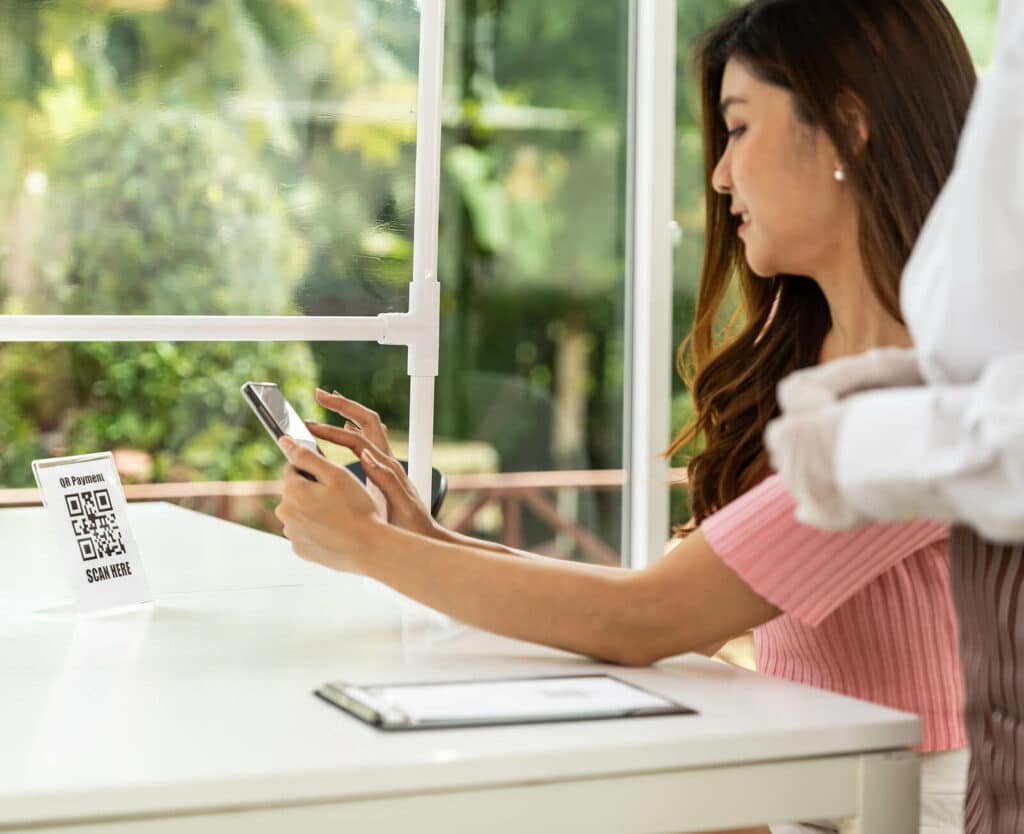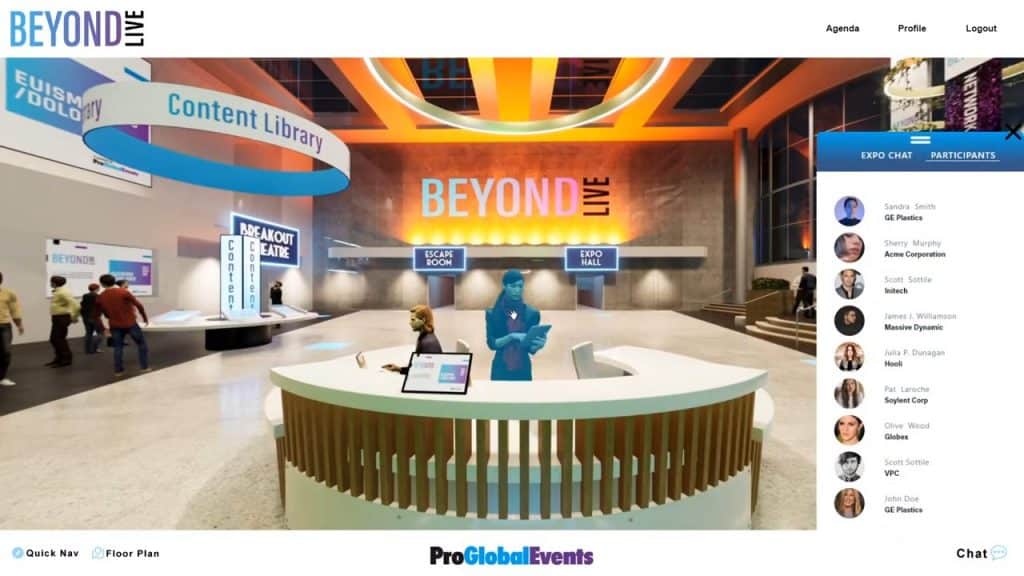It’s possible that in the next few years the events industry will walk into a new normal. One thing that’s likely to stick around is a shift towards making events as contactless as possible. This means fewer physical contact points—where attendees all interact—in an attempt to minimize the spread of germs.
A completely contactless event may not be possible (unless it’s virtual), but there are ways to reduce the number of contact points to help make events safer for everyone.
1. Contactless Check-In
The check-in process is a potential virus risk for two reasons
- A lot of people sharing the same space – Even if you mark out safe social distancing guidelines, like 6-feet stickers on the floor, it’s still a problem because those precautions are easily missed or ignored. It becomes especially tricky for events that queue indoors.
- The risk of virus transmission via objects – For instance, physical check-in methods, like tablets, and/or associated items: paper tickets, wristbands, badges, stamps, etc.
A digital contactless check-in system can help solve both problems. Send attendees a QR code via email, which they scan to check themselves into your event. Or if they wish, they can print the QR code in place of a physical ticket. This means they don’t have to line up to check in, and it avoids the need to touch or transfer physical items.
2. Digital Navigation
Many events use helpdesks or kiosks to help attendees by providing directions and information. At a contactless event—or any event where you want to minimize interactions—this kind of helpdesk is best avoided. Instead, use digital tech to help people navigate and find answers to questions. For instance:
- Integrate GPS into a digital map.
- Use beacons to help attendees find their way around.
- Provide a thorough FAQ via your event app.
- Offer a digital helpdesk staffed with people who can answer questions via text or through the event app.
Include THIS in Your Event App
3. Contactless Product Demos Using VR and AR
Virtual reality and augmented reality are already mainstays at many events, especially in the tech world. The ability to enhance reality has helped many companies create impressive product demos and branding messages. Now this tech could provide exhibitors with a way to help people experience their products safely, with zero contact.
One stumbling block to using VR in this way might be the need for a VR viewer in order to use the tech. But there are work-arounds. For instance, inexpensive VR viewers, such as Google Cardboard, cost under $15 per viewer. By using “disposable” cardboard viewers and reserving VR demos for leads, you could achieve virtual reality at your event both safely and without a prohibitive financial outlay.
4. Serving Food Safely
Most large events have food and beverage vendors, but providing refreshments can present a considerable transmission risk if it’s not done with due care. Buffet-style self-service and table service are both risky to offer at events. Even indoor or seated dining can be risky because eating and talking are both high-transmission risks for an airborne virus. Since people aren’t wearing masks while they’re eating, it’s vital that attendees have the means to keep themselves safe.
Digital tech can help alleviate some of the strain. It’s QR codes to the rescue again, as these can be added to digital menus. Attendees scan codes to order food and then collect the food themselves once it’s ready. This eliminates the need for servers. And with contactless payment options, diners can have a completely contact-free meal.
Of course, it’s important to supplement any digital methods used with physical distancing. Seating should be distanced appropriately—and outdoors if possible—for the best ventilation.

5. Sanitization and Contact-Tracing
It’s likely to be difficult, if not impossible, for an in-person event to go 100% contact-free. Because of this, it’s also important that event organizers follow local and state guidelines in planning the event. And it’s they do so visibly, so exhibitors and attendees feel safe enough to attend and enjoy the event.
This might include such measures as providing sanitization stations that people can use as they move around the venue. Masks could also be offered at sanitization stations, for those who don’t have one or who need to replace their existing mask.
You may also want to establish a system for digital contact-tracing to help track who’s at your event and where they’ve traveled from. Contact-tracing is mandatory in some countries, but in most it’s an option that helps track viral hotspots and predict outbreak locations. This keeps your attendees and staff informed and lets them know that you see their safety as a priority.
6. Virtual Events for a Guarantee
A virtual event is the only 100% contactless event. Even for a small in-person event, there are too many variables, processes, and people involved to be able to make such a guarantee. And the bigger the event, the more difficult it becomes. That doesn’t mean that live events are out of the question, but it does mean they’re more complicated than they used to be.
Why not plan a virtual event instead? If your event is fully online, it’s essentially risk-free. Speakers, presenters, exhibitors, and attendees all take part virtually, meaning no one has to travel or attend a physical venue. And if you host it on an interactive, all-in-one platform, you’ll get the same kind of engagement as a physical event—and even better data. If you want your event to be completely contactless and risk-free, then virtual is the way to go.

Contactless or Reduced Contact Events Could Be the New Normal
COVID-19 shook up the events industry, and it’s likely that many of the changes we’ve witnessed will be long-term or permanent ones. Tech that reduces points of contact between attendees, exhibitors, and event staff may be adopted on a permanent basis. Having a 100% contactless event may be difficult, but reduced contact is something that most events should be able to achieve.









